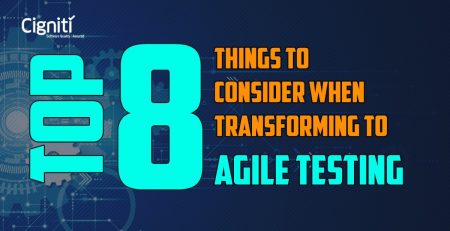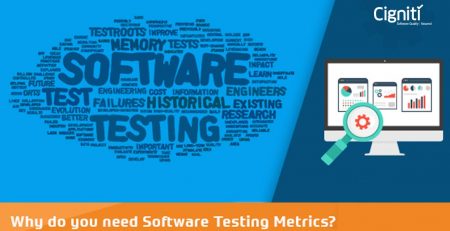How Technology Is Changing the Insurance Industry
|
Listen on the go!
|
Technology has revolutionized the insurance sector, streamlining processes and enhancing customer experiences. Insurtech startups leverage artificial intelligence and blockchain to create innovative risk assessment and claims processing solutions. Mobile apps and online platforms provide convenient access to policies and allow for seamless communication between insurers and policyholders.
Additionally, data analytics tools enable insurers to better understand customer behavior and preferences, leading to more personalized offerings and improved pricing models. Overall, integrating technology in insurance sector drives efficiency, transparency, and, ultimately, a more customer-centric approach.
If insurance companies fall behind in adopting technologies, they may fall behind in the competitive market. We also witnessed how technology improved our lives during and after the pandemic (COVID-19).
The technology infrastructure needs to be continuously enhanced. One relevant classic example is the development of the COVID-19 vaccine. Without the right technologies in place, it would not have been developed in the short span of around 12 months. Time and again, we notice that businesses can be scaled seamlessly with the right technologies. Customers also trust companies that embrace the right technologies.
Going forward, insurance companies need to behave like technology companies selling insurance. Technology in insurance industry should be given utmost importance while planning and executing strategies. Some great companies have already shifted their mindsets like this. Utilization of cloud platforms and services should increase, driven by increased emphasis on big data, AI, ML, etc.
Below are the latest technologies that enable insurance companies to generate more business and satisfy customer needs.
1. Predictive Analytics:
A few areas where Predictive Analytics is used in Insurance companies are
- Pricing and risk selection
- Identifying probable high-value claims
- Identifying the fraud risk
- Triaging Claims
Analyzing claims to settle the claims based on priority so that the most critical claims are taken care of first.
Companies that use Predictive Analytics technology have scope for improving loss ratios and increasing new business premiums. The loss ratio formula is insurance claims paid plus adjustment expenses divided by total earned premiums.
2. Artificial Intelligence and Machine Learning:
Nowadays, more people are using AI-enabled devices in their homes. AI technology is being used by insurance companies. AI technology has the capacity to process massive amounts of customer data and enables the creation of personalized products for customers. With this AI technology, claim turnaround time can be greatly reduced. Claims can be approved in a few minutes. Going forward, AI technologies can identify emerging risks for generating higher revenues for insurance companies by launching relevant products for their customers. Thus, the customer experience journey would be redefined with AI technologies. Cashless cases can be handled with instant health insurance claims based on artificial intelligence.
Consumers always seek personalized experiences, especially when purchasing something as important as P&C insurance. The key is to use AI’s capabilities to leverage the massive amounts of consumer data available to create personalized experiences based on an individual’s behavior and habits.
3. Machine learning
is technically a branch of AI, but it’s more specific. Machine learning is based on the idea that we can build machines to process data and learn independently without our constant supervision.
As we know, if any claim is processed wrongly, it would be a huge loss to the insurance company. Also, if any claim is rejected erroneously, it spoils the insurance company’s reputation. With machine learning technology, claims can be processed without human intervention. Inbuilt algorithms would analyze the claims data when the claim is received, and claim settlement would be quick and error-free. Advanced ML models can be implemented to determine and auto-approve the optimal amount in non-surgical hospitalization cases, reducing cashless claim approval time from a few hours to a few seconds.
4. The Internet of Things (IoT):
Most consumers are willing to share extra personal information if it means saving money on their insurance policies, and the Internet of Things (IoT) can automate much of that data sharing. Insurers can use data from IoT devices, such as the various components of smart homes, automobile sensors, and wearable technologies, to better determine rates, mitigate risk, and even prevent losses in the first place.
IoT will bolster other insurance technologies with first-hand data, improving the accuracy of risk assessment, giving insureds more power to impact their policy pricing directly, and allowing insurers to improve accuracy and revenues.
Insurers can use the data from smart houses, automobile sensors, etc., to finalize the rates, reduce risk, and, most importantly, prevent losses. For example, a car owner’s driving habits are analyzed, and premiums are calculated after assessing the risk.
5. Social Media:
The customer’s activities on social media can be analyzed, and insurance companies can use the analyzed data, especially during claims processing.
Social media and its role in the insurance industry are evolving beyond marketing strategies and clever advertisements. Mining social media data improves risk assessment for P&C insurers, bolstering fraud detection capabilities and enabling entirely new customer experiences.
Technology in Insurance can also leverage social media to investigate fraud. Insurers can look at the social activity of insureds and compare it to claims records, looking for discrepancies. A Morgan Stanley report cited a tool utilized by carriers to investigate claims throughout the assessment process that examines the social relationships between parties involved and monitors their activity on the day of the loss to look for red flags.
6. Telematics
Auto insurance policies will continue to be impacted by telematics capabilities. In insurance technology, think of telematics as wearable technology for your car. Cars can now be equipped with monitoring devices — think Progressive’s Snapshot — that measure various indicators such as speed, location, accidents, driving habits, terrain of operation, driving time, and more. These are all monitored and processed with analytics software to help determine your policy premium.
The benefits of telematics are numerous for both insurers and the insured. Telematics in P&C insurance will:
- Encourage better driving habits
- Lower claims costs for insurers
- Change carrier-to-customer relationships from reactive to proactive
This is a technology where devices are fixed to the cars. These devices fixed to the car will capture data related to the car’s speed, location, accidents, etc. This data is analyzed, and a policy premium is calculated based on the customer’s driving habits, terrain of operation, driving time, etc.
7. Chatbots
These bots will interact with the customers, especially for monotonous activities, by reducing the intervention of the insurance company employees. So, the insurance company’s employees can focus more on complex activities like generating new business, customer service, etc. Hence, insurance companies can minimize the expenditure on a few processes and activities that would increase the revenues and profits of the company. A robo-calling tool can be used to enhance the retention of customers. Can AI Bots be used to provide continuous IT support? Employees can use HR Bots with ease of query resolution for day-to-day queries.
8. Low Code:
Insurers today need to be able to manage software platforms, deploy updates, and go to market with new products efficiently and accurately. While this process used to require a skilled developer or IT team, new advances in software-specific coding platforms have made this process easier than ever before.
Low code tools enable the insurance company’s employees (non-IT professionals) to develop and implement new software, and time to market can be reduced significantly.
The biggest benefits of low-code development are:
- Drastically increased speed to market
- Widespread app development across the organization
- The ability to build foundational features that can be expanded upon
- Empowering employees to take control of their work/offerings
9. Drones
Drones collect data that can be analyzed and then used before issuing the policy. Also, drones can travel to the damaged area and get the data required to assess the loss. In contrast, if humans are involved in loss assessment, it would consume a lot of time and effort, and sometimes, it may not be feasible to reach the location where the damage occurred due to bad weather conditions, bad roads, etc. Drones are especially helpful for assessing the losses due to natural catastrophes. If loss assessment is done quicker and claims are settled quickly, then the insured’s life would return to normal in less time.
10. Satellites
Satellites can be used to devise new risk management solutions and augment existing ones. Advances in satellite imagery technology allow us to foresee the details and identify the locations and intensity of the events. To reduce the risk, insurance companies can alert their customers through various modes of communication channels and share the best risk management practices for curtailing losses. This technology can help to enhance the efforts to locate customers who could have been impacted by natural calamities. Once identified, insurance companies can engage with the customers to implement the necessary changes.
11. ICR/OCR technology
This technology can be used to automate end-to-end claims processing. Data can be extracted from the claims form and hospital bills, decreasing the TAT.
It brings the following benefits to organizations:
- Great for maintaining electronic archives of records, ICR/OCR can be used for document management and is a scalable solution.
- ICR/OCR services provide robust data verification and eliminate time spent on manual data entry. This lets employees be more productive and efficient.
Successful digital businesses need to shift to integrating a continuous quality approach across the application life cycle. They need to pursue a continuous approach to quality that is focused on prevention and automation, utilizing key agile practices such as test automation that support continuous quality.
Build a strategic blueprint while implementing digital technology in insurance sector
Even with strategic goals set, effective implementation involves extensive preparation. Before moving forward, companies should be clear about how, when, where, and why they want to deploy different technologies. Companies must develop and follow an executable roadmap that can help them realize their digitalization strategy. This approach is underpinned by three key steps:
- Strategic blueprinting— entails identifying providers for priority use cases, designing future interaction and capability models, and establishing a cross-functional digitalization center of excellence.
- Testing the strategy—Actual or simulated transactions flowing through use cases to test, learn, pivot, and deploy
- Implementation of solutions—Broader rollout and full-scale implementation of digital solutions across the business, spanning countries, business units/functions, and products
Conclusion
To achieve the winning edge, insurance companies must transform themselves by adopting agile technologies that will help them rapidly, seamlessly, and effectively meet these new challenges (and others) as they arise. A winning edge focused on customer centricity, go-to-market agility, and the adoption of intelligent processes.
Cigniti has significant experience in testing and validating the applications that are used by insurance companies across the globe. Cigniti provides quality assurance services by performing end-to-end testing of insurance applications. End-to-end testing includes functional manual testing, functional automation testing, performance testing, security testing, etc.
Cigniti supports global insurers in their digital transformation journey and helps them deliver an improved customer experience and gain a competitive advantage. We ensure customers’ apps and systems run seamlessly by ensuring efficient back-office operations. Our insurance testing services are backed by a portfolio and an unrivaled track record demonstrating that we are a trusted advisor and preferred technology partner for insurance clients.
Need help? Consult our insurance domain experts to learn more about how the latest technologies are changing the insurance industry.





Leave a Reply